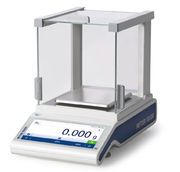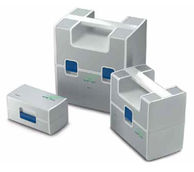REVA Medical and the New Jersey Center for Biomaterials to develop fully resorbable drug delivery stent that is visible by x-ray
REVA Medical, Inc. and the New Jersey Center for biomaterials have joined forces to develop the first resorbable polymer drug-delivery stent that is visible by X-ray radiography/fluoroscopy. X-ray visibility is necessary for placement accuracy and continued monitoring of the device after implantation.
Resorbable stents have many inherent advantages over permanent metal devices currently used to treat narrowing of the arteries of the heart and other areas of the body. Metal drug-eluting stents are limited to a thin polymer matrix for drug delivery. A resorbable polymer stent can potentially deliver a greater drug payload over a longer period of time to limit the occurrence of localized restenosis, or re-narrowing, of vessels. This type of stent also presents a unique opportunity to locally deliver two or more drugs over multiple time scales to treat a variety of clinical conditions. Once the drug is delivered and vessel function is restored, the polymer will be completely resorbed, leaving no permanent implant behind.
The selected materials for the stent development program are a family of tyrosine-derived polycarbonates, versatile, degradable polymers with proven biocompatibility, developed by Dr. Joachim Kohn, Director of the New Jersey Center for Biomaterials. In his recent presentation at the September 11th Stent Technologies in Endoluminal Therapies Summit at the Cleveland Clinic, Dr. Kohn, who is also a Rutgers University Board of Governors Professor of Chemistry and Chemical Biology, explained that, "Tyrosine-derived polycarbonates combine sufficient mechanical properties for stent manufacture with a high degree of biocompatibility. X-ray visibility is achieved by the inclusion of iodine atoms to the polymer."
The polymer is combined with the REVA Medical slide-and-lock technology, a highly innovative stent design that allows deployment without significant deformation of the stent structure. This is a major advantage as polymers are not as resistant to deformation as metals. Commented Robert K. Schultz, PhD, President, REVA Medical, "The slide-and-lock technology allows REVA to create fully resorbable stents -- something traditional deformable stent designs simply can't achieve. REVA's stent design is a highly differentiated piece of intellectual property that presents a clear path to stent commercialization. We are aggressively pursing strategic partnerships to successfully bring this technology to market."
In-vivo studies have demonstrated that stents with the slide-and-lock design can be made of poly(DTE carbonate) and be successfully deployed in femoral and coronary porcine arteries using standard balloon deployment. According to Dr. James Anderson, MD, PhD, Case Western Reserve University, "Histological evaluation of poly(DTE carbonate) stents at 28 days in porcine arteries revealed a normal healing response with a normal foreign body reaction at the tissue/material interface and no acute and/or chronic inflammation." Additional work with poly(DTE carbonate) as an anti-restenosis drug-delivery vehicle demonstrates the significant potential of this polymer for vascular applications. Together these studies are of major significance as they illustrate the potential of these novel stent materials and designs in the treatment of vascular disease.
Other news from the department science
These products might interest you

MS-Präzisionswaagen by Mettler-Toledo
Trusted Results at Your Fingertips
Capacity from 320 g to 12.2 kg, readability from 1 mg to 100 mg

Carepacs by Mettler-Toledo
Professional CarePacs for smooth routine testing
Tweezers, gloves and other accessories for professional weight handling

Get the life science industry in your inbox
By submitting this form you agree that LUMITOS AG will send you the newsletter(s) selected above by email. Your data will not be passed on to third parties. Your data will be stored and processed in accordance with our data protection regulations. LUMITOS may contact you by email for the purpose of advertising or market and opinion surveys. You can revoke your consent at any time without giving reasons to LUMITOS AG, Ernst-Augustin-Str. 2, 12489 Berlin, Germany or by e-mail at revoke@lumitos.com with effect for the future. In addition, each email contains a link to unsubscribe from the corresponding newsletter.




















































